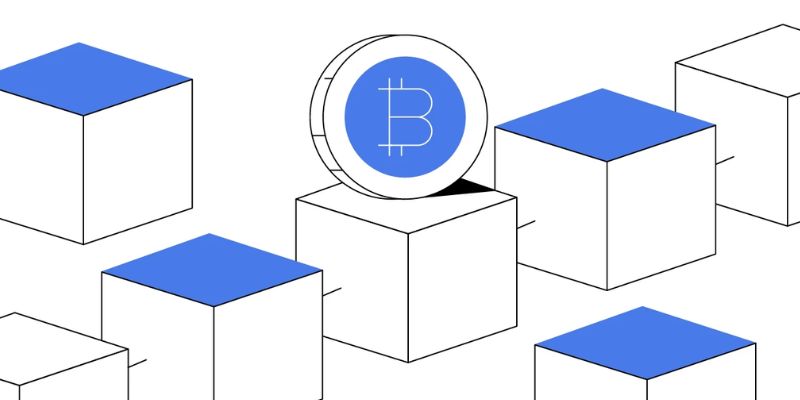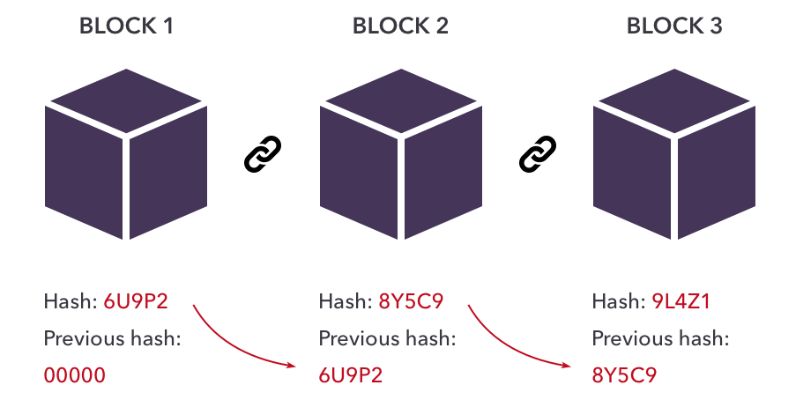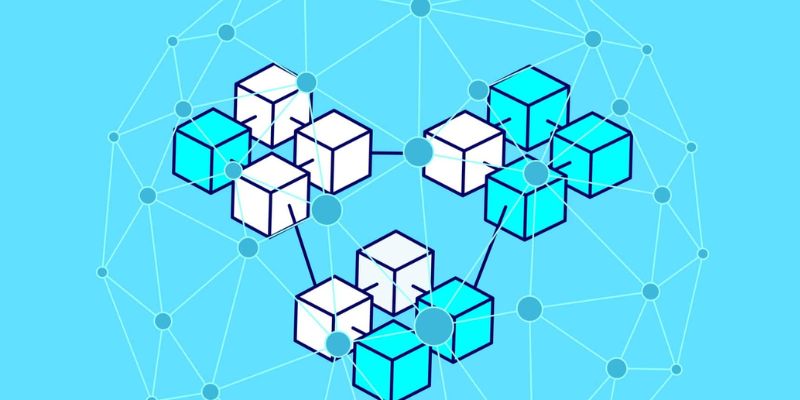Have you ever wondered, “What is a block in blockchain?” Let’s dive straight into the heart of blockchain technology, the buzzword of the digital era. By peeling back layers of complex jargon, we reveal the simple yet incredible workings of a block. These digital data structures are the steel and concrete of the vast, decentralized skyscraper that is blockchain. Join me as we navigate the intricate details of how transactions cement into blocks, forming the unbreakable chain of blocks that we rely on for secure, transparent digital transactions. With your curiosity as our compass, let’s embark on a journey to understand these foundational elements that are reshaping our digital world.
Demystifying the Building Blocks of Blockchain
The Basic Components of a Blockchain Block
Imagine you’re building a tower with toy blocks. Each block in that tower needs to be strong to keep the tower from falling. Blocks in a blockchain are like that, each one holding info that keeps the digital tower, our blockchain, safe and standing.
A block starts with a block header. This bit contains key details. Think of it as a block’s ID card, showing who it is and where it stands in the long chain of blocks. The header has the block’s own fingerprint, called a “hash,” and the hash of the block before it, hooking them together in order. There is also a timestamp that shows when the block joined the party. And there’s a thing called a nonce, a special number used to build the block’s hash.
Now, let’s peek inside the block. Here we pack in a list of transactions, like emails in an inbox, each one locked tight with special math called cryptography. We also have a thing called a “merkle tree,” a way of organizing these transactions so we can quickly check if any single one is correct without digging through every one.
Quick quiz: What is at the core of a blockchain block? The core includes the block header, transactions, and a unique hash.
Blocks carry a set limit of transactions. This limit depends on their size. Think of it as a backpack—there’s only so much you can fit inside. Our backpack, the block, can only carry so much data before it’s full.
How Transactions are Shaped into Blockchain Blocks
How do emails get into your inbox? You click send, and zap, they’re there. In blockchain, it’s a bit more complex. Let’s break it down.
First, someone makes a transaction, like sending a digital coin. This transaction gets broadcast to a network of computers. Here’s where miners come in—they’re like the mail sorters of our blockchain world. They grab a bunch of transactions waiting around and get to work.
Using powerful computers and lots of energy, miners solve tough math puzzles. The first one to solve it gets to make a new block. That’s when the transaction list gets sealed into the block. Once done, the whole network checks the work, agreeing it’s done right. This is what’s called the “consensus.” It’s like having all your friends agree your block tower is the best.
Winning miners get a prize called a “block reward.” This is their incentive to keep working, putting transaction after transaction into new blocks. This is also what creates new coins in some cryptocurrencies.
Another thing to know is the chain keeps growing, block by block. Each new block hooks to the last with its hash fingerprint. This makes the blockchain tough to mess with. Change one block, and you’d have to fix every block after to cover your tracks.
In closing, a block in blockchain is like a sturdy link in a chain. It holds transactions and details that make the chain work well. It gets checked and locked in place by many to keep everything honest and safe. Remember, each block matters, keeping our digital world secure and working right.
So, who thought a bunch of blocks could do so much? In the world of blockchain, they’re the stars, making sure everything ticks on without a hitch.
The Backbone of Security and Transparency
Cryptographic Hashing: The Seal of Trust
Imagine you have a box that needs to keep a secret safe. In blockchain, that box is called a block, and the secret is data from transactions. To lock the box, we use something called cryptographic hashing. Hashing turns data into a unique code. Think of it like a fingerprint for the data. If the data changes, so does the fingerprint. This helps keep the secret—the transactions—safe and sound. No one can change the data without being noticed. This is how trust is sealed in the block.
Block Validation and Consensus Mechanisms: Ensuring Integrity
Now, it’s not enough to just lock the box and hope for the best. We must also check that the lock is secure. That’s where block validation comes into play. It’s like having a group of experts test your lock to make sure it’s solid. These experts are computers that run algorithms, or a set of rules, to confirm everything in the block is true and correct. This process is a big part of blockchain’s power. It means that once your data, or transaction, is part of a block, it can’t be meddled with. It’s there for good, and everyone can trust that it’s the real deal.
The experts, or computers, come to an agreement on the block’s validity. They use consensus mechanisms, which are like rules for saying, “Yes, we all agree this block is true.” There are different types of consensus mechanisms. Two well-known ones are proof of work and proof of stake. Each has its own way of reaching that “Yes,” but they both make sure only valid blocks join the blockchain.
The blocks then line up, one after another, and link together. This forms a chain of these boxes, which everyone can check. It’s like a ledger in the old days when people wrote down every trade in a book. Except now, it’s digital and much more secure. All this helps keep blockchain technology reliable and tough against fraud.
In the end, blocks are the heart of blockchain security. They are where trust starts and where it’s proven. With every block that joins the chain, the more secure and transparent the whole system becomes. It’s like building a tower with super-strong blocks—each new layer makes the whole structure more robust. We can peek into this tower anytime using block explorer tools to see all the transactions stacked neatly inside. This is how we know where every bit of data is and that it hasn’t been tampered with.
And there you have it—blocks are the stout guardians that ensure everyone plays by the rules in the vast digital world of blockchain. Isn’t it fascinating how a concept as simple as a block can be fundamental to creating a system of trust? It’s the unassuming hero that makes sure our digital transactions are secure and clear for everyone to see.
Beyond the Code – Exploring the Blockchain’s Anatomy
From Genesis Block to Advanced Blocks: Evolution of the Chain
What’s the first block in a blockchain called? It’s the genesis block. This block starts the whole chain. It’s special because every other block links back to it. As blockchain grows, blocks add more features. These features make it work better and keep it safe.
Over time, blocks in the chain have grown more advanced. When we started, we just did basic stuff. Now, blocks can do more, like running tiny bits of code called smart contracts. These manage deals between people without a middleman. So the blockchain does what it promises, without anyone cheating.
Blocks now also have things like a timestamp, transaction info, and a unique code called a hash. This hash is a tricky puzzle. Computers have to work it out to add a new block to the chain. It protects our blocks from hackers.
As we add more blocks, we make sure the old ones stay safe. Each new block checks the one before it. This is how everyone agrees on what’s true on the blockchain.
How Data Storage and Block Size Influence Blockchain Performance
When we talk about block size, we mean how much data each block can hold. It’s kind of like a digital ledger page. If the page is too small, not much info fits on it. If a block is too small, it can’t hold many transactions. This slows everything down because you have to wait for the next block.
What happens when block size is just right? It makes the blockchain run smooth. It’s like Goldilocks finding the perfect porridge. If the size fits all our needs, transactions pile up less. We all want our transaction to make it into a block fast.
If we make the blocks too big, though, that causes other problems. Bigger blocks are harder to spread across the network. They’re like a giant puzzle that takes longer to solve.
Small block, big block, or just right—it all affects how the blockchain works. We want it to be fast but also keep everything in order and safe. That’s the balance we’re aiming for with every new block we create.
So each block is a careful mix of size, security, and speed. As experts in blockchain, we keep tweaking and improving with each new block. This way, we can trust our blockchain, knowing it’s secure and works like a charm.
Navigating the Future of Blockchain Architecture
Optimizing Block Propagation and Confirmation Times
Imagine shouting to friends down a long hallway. That’s like how blocks travel in blockchain. Blocks need to move fast and reach everyone for a blockchain to work well. We call this block propagation. Like your voice in that hallway, blocks carry data. They need to reach every computer or node in the blockchain.
Now, each block has a special job. It confirms the actions we took, like sending bitcoin to a friend. Confirmation times are key. They’re like a thumbs-up that our blockchain moves work. When we buy with crypto, we want a quick thumbs-up. This keeps users happy and trust high in our blockchain world.
Making block travels fast and getting quick thumbs-up are big goals in blockchain tech today. Teams work hard to make blocks smaller in size so they can move quicker. They also try to solve puzzles easier and faster to get confirmations done in no time. All this makes blockchain a lot like a super-highway, where information zips around at top speed.
The Role of Smart Contracts and Fork Management in Blockchain Evolution
Think of smart contracts as digital handshakes that never break a promise. They are rules that live in the blockchain. Smart contracts do neat things, like sending your friend money on their birthday, all on their own. They follow the rules we set and always keep them. That’s like having a robot friend that never forgets.
Blockchains, like everything else, can change over time. Sometimes they split into two pathways. We call this a fork. “Soft” forks are like taking a side-walk next to the main path. “Hard” forks are more like a fork in the road, one path going a whole new way. Forks happen when people in the blockchain world want to change rules or fix issues.
Smart contracts help these forks work smooth. They’re like traffic lights that guide the data along the right path. And in both soft and hard forks, these contracts keep doing their job so nothing breaks down.
When we think about the future, these two things – block spreading and smart contracts – are stars. They help our blockchain universe stay bright. They make sure everything’s running as it should, keeping it rock-solid and safe for all of us to enjoy and trust. So, as we look ahead, we’re working on making blocks travel like lightning and smart contracts smarter and stronger. This will keep our blockchain growing strong and reaching for new skies.
In today’s chat, we cut through the tech talk and laid out the core parts of blockchain. We started by breaking down blockchain blocks and showing how transactions turn into blocks. We then showed how hashing and consensus keep the system honest and strong. We also looked at the chain’s growth from the first block to more complex ones and how storage and size affect the tech. Lastly, we talked about making block sharing faster and how smart contracts and handling forks push blockchain forward.
I believe understanding blockchain is key to using it right. It’s more than code; it’s a growing system that will shape our future. By knowing its parts, we can make better tech choices and build trust in our digital world. Keep learning and stay aware, because blockchain is here to stay, and knowledge is power.
Q&A :
Sure, here are the FAQ entries:
What exactly is a block in the context of blockchain?
A block in the blockchain represents a data structure fundamentally used for keeping a set of transactions which is distributed to all network participants. Each block contains transaction information, timestamps, and cryptographic hashes that link each block to the previous one, creating an immutable chain.
How does a block function within a blockchain system?
A block works within a blockchain by recording the most recent transactions that have taken place. Once completed, a block goes through a validation process and is then appended to the existing blockchain. This is done by miners in proof-of-work blockchains or validators in proof-of-stake systems, ensuring the integrity and verifiable nature of the transaction records.
Why is a block significant in maintaining blockchain security?
A block is crucial for blockchain security because it contains a unique hash value. This hash, along with the hash of the block before it, ensures that every block is mathematically linked to its predecessor. Any attempt to alter transaction data within a block would change its hash and break its connection to the blockchain, which helps prevent fraud and unauthorized alteration.
How often is a new block created in a typical blockchain?
The creation of new blocks in a blockchain depends on the particular blockchain protocol. For instance, in the Bitcoin network, a new block is typically created every 10 minutes. This time frame can differ in other blockchains based on their protocol rules and the specific consensus mechanism they employ.
Can the data contained within a blockchain block be altered?
Once a block has been added to the blockchain, altering its data is extremely difficult. This is because each block contains its own hash and the hash of the previous block. To change data in a block, one would have to recalculate both its hash and the hash of each subsequent block, which requires tremendous computational power. This inherent feature of blockchain is what provides its tamper-evident and secure characteristics.


